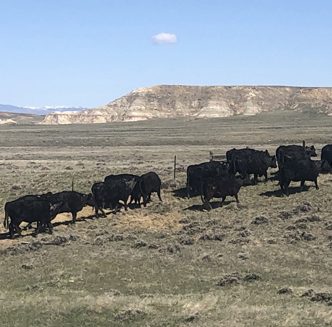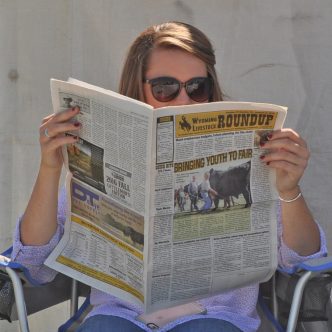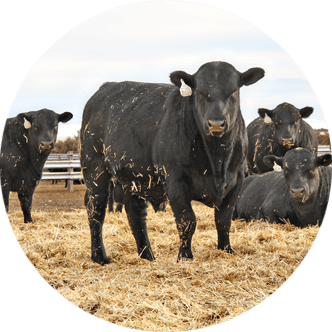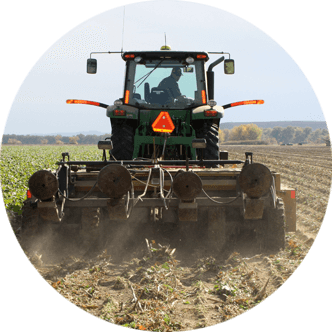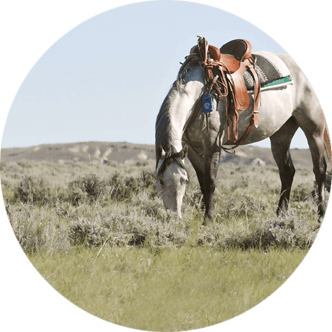Wyoming Must Invest in Landscape Recovery, Resilience
By: Bob Budd
The “perfect storm” of drought, high winds and convective storms launched a firestorm over northern Wyoming leaving nearly one million acres scorched in a matter of days this past summer. Those catastrophic fires – House Draw, Flat Rock, Remington and Constitution – made headlines, but they were not the only natural disasters of the year.
Laramie County, often considered a “Teflon” landscape, saw more than 6,634 acres burned in an early fire, while Platte and Goshen counties sustained fires that torched another 28,984 acres. This was a warning.
For years, range managers and ranchers have warned against the spread of invasive annual grasses, like cheatgrass, which thrive on drought, fire and bare ground.
A 2019 initiative led by Gov. Mark Gordon identified the risk of invasive annual grasses as a primary threat to the ecological underpinning of Wyoming – a threat to all of our major industries.
In 2024, the governor addressed this threat in his request to the Wyoming Legislature to allocate significant resources to suppress these flame-friendly grasses.
One of the most salient recommendations from the Invasives Task Force was to “assess state-level funding for invasive weed management to identify opportunities to increase flexibility of use and time constraints on using those funds and to better leverage available funding.”
This recommendation responds directly to the needs we see today, on the ground, facing our producers who are caretakers of the land from which the state realizes significant returns.
If we want to maintain the ecological integrity of Wyoming’s landscapes, the very underpinning of our most vital economic engines, including agriculture, tourism, wildlife resources and industry, we have to make a stand.
Today, one of the greatest threats we face is native grasslands and sagebrush ecosystems giving way to invasive grasses and weed species, both exotic and native.
These ecosystems evolved with natural disturbances, including fire and grazing by native herbivores. In more recent geologic time, these natural disturbances continued through sustainable management of timber as well as forage harvested by both domestic and wild animals.
We were lulled into believing we were immune to the threat of species like cheatgrass or the expansion of species like Utah juniper. We were wrong. The result is a landscape vulnerable to the encroachment of both, and the reality that the combination is the fuel for cataclysmic fires like those we saw last year.
If we truly desire to defend Wyoming’s forests and grasslands, we have to act as aggressively as wind-driven flames, wind-borne seeds and the roll-of-the-dice reality of where lightning might strike next. The answer is to build resilience into our ecosystems.
The Wyoming Legislature was asked to spend $130 million to address the threat of invasive annual grasses, restore severely burned lands and restore native grasslands and forests to a condition which will allow natural fire and, at the same time, repel fires of the catastrophic nature we saw in 2024.
These funds will augment the millions of dollars spent annually through local conservation districts, weed and pest districts, non-governmental organizations, state agencies, federal partners and, above all, the management actions of private landowners, who are the stewards of Wyoming’s iconic landscapes.
These are not “handouts” to private landowners. They are landscape-scale projects driven by local entities like conservation districts and weed and pest agencies. They are locally based and inclusive of multiple interests. They are blind to land ownership – a deer doesn’t know where it sleeps – it just wants a safe place to sleep.
At this point in time, the Wyoming Legislature has reduced the funding to $100 million and changed it from a landscape-scale grant program to a loan program for individual landowners.
The Senate has added an amendment allocating $40 million to grants and $60 million to loans, but the House rejected this compromise.
The Invasives Task Force report is clear success depends on a landscape-sized approach which ignores man-made boundaries.
“In order to increase treatment success, effective practices need to be implemented across boundaries of private, state and federal land ownership,” the task force report states.
This is the “Wyoming Way,” and we have been recognized nationwide for our ability to address natural resource issues as a community, at the level of the government closest to the people on the ground.
The role of the state is to allow people who live on the land to direct actions which will create resilient landscapes for future generations.
Is it fair or just to ask the victims of a catastrophe to pay the bills to maintain our wildlife, scenic views, water quality or economic potential for future generations of land stewards for the Wyoming we all cherish?
Or, in the Wyoming Way, is it time to build resilience into our landscapes, like we hope to build in ourselves and our families?
Bob Budd is the executive director of the Wyoming Natural Resources Trust Fund and can be reached by visiting wwnrt.wyo.gov. This opinion column was originally published by WyoFile on Feb. 7.

